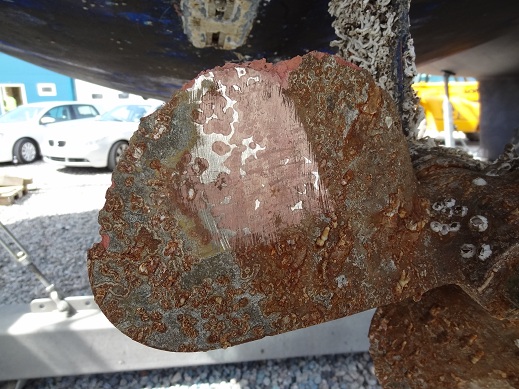Are my Seacocks Safe?
Are my Seacocks Safe? In recent years much has been written and discussed about seacock valves. As a surveyor an important aspect of a Pre-Purchase or Condition Survey is to check seacocks for corrosion and general condition.
It is known that roughly three broad types of material are in use for marine seacock valves. These include Brass, Bronze and Plastic/Composite. The problem over the year is with Brass valves. Brass in itself comes in various forms, the problematic non-corrosion resistant Brass is where the real issue exists.
Brass alloy is part Zinc and like your anodes being made from Zinc, this metal will corrode in a marine environment. Brass is cheaper than Bronze and corrosion resistant Brass is more expensive than standard Brass. Once again it comes down to money.
Production yachts and motorboats are built to a price. Amongst the many thousands of components, seacock valves are just another area of the vessel that are scrutinized and alternatives sought if cheaper.
The rear problem for seacocks began when the Recreational Craft Directive (RCD) which came into force in 1998. ISO 9093-1 is the standard for seacock valves and within the definition of their corrosion resistance, it stipulates they must have a minimum of 5 years service life. No further clarification was provided in the RCD on standards relating to the suitability of the alloys to be used. Sadly many boat owners are blissfully unaware of this fact and so if taken at face value one should consider replacing all the seacock valves and associated fittings such as elbows etc every 5 years.
From a surveyors perspective, the presence of corrosion called Dezincification where the Zinc component in the brass alloy is wasted away this leaves a Copper rich alloy which has two properties. It first is a bright pink colour and may be pitted, and second it is brittle.

Image of a Propeller illustrating Dezincification at its worst. Note the Pink colour and damage.
When struck with a hammer this propeller shattered like glass!
It can be difficult to determine the true condition of a seacock valve based on a visual inspection alone. Externally it may appears sound, but internally the metal may be corroded and the valve weak.
When looking at your seacocks or looking to replace them you need to purchase either Bronze or Corrosion Resistant Brass or DZR Brass. What you need to do is look for a CR marking on the body of the valve to indicate Corrosion Resistant.
Your seacocks need regular checks for condition and operation and the presence of obvious corrosion. When not in use seacocks should be kept shut. Hoses attached to valves should be secured using two stainless steel clips. Softwood bungs should be maintained onboard as part of your safety equipment.

Image of a cracked seacock. This was noted during a survey with the vessle ashore.